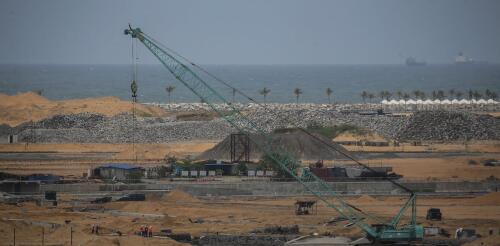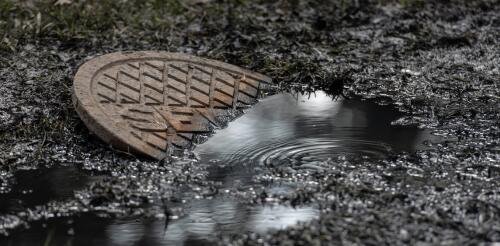Infrastructure
Heavy downpours and a thick snowpack in the Western mountains and Upper Midwest have put communities in several states at risk of flooding this spring – or already under water. Flooding is the costliest type of natural disaster in the U.S., responsible for about 90% of the damage from natural disasters each year. It happens almost every day somewhere in the country. Yet, much of the aging infrastructure meant to protect U.S. communities is in bad shape and, in some cases, failing. The American Society of Civil Engineers gave the nation’s dams, levees and stormwater infrastructure a D grade in its latest report card, in 2021. Help is coming. Congress authorized billions of dollars for infrastructure projects under the Infrastructure Investment and Jobs Act in 2021. But there’s a problem: New infrastructure planning frequently relies on historical flood patterns for its benchmarks rather than forecasts of changing risks as the climate warms. We study flood ris...
Across the U.S., children and adults are increasingly exposed to harmful chemicals from a source few people are even aware of. It begins on a street outside a home or school, where a worker in a manhole is repairing a sewer pipe. The contractor inserts a resin-soaked sleeve into the buried pipe, then heats it, transforming the resin into a hard plastic pipe. This is one of the cheapest, most common pipe repair methods, but it comes with a serious risk: Heating the resin generates harmful fumes that can travel through the sewer lines and into surrounding buildings, sometimes several blocks away. These chemicals have made hundreds of people ill, forced building evacuations and even led to hospitalizations. Playgrounds, day care centers and schools in several states have been affected, including in Colorado, Connecticut, Massachusetts, Michigan, Pennsylvania, Washington and Wisconsin. With this sewer pipe repair method, the chemical wast...
More than one-third of all people in the world live in cities, towns and villages on coasts. They rely on healthy oceans for many things, including food, income, a stable climate and ready connections to nature. But as coastal populations continue to grow, governments are under increasing pressure to ramp up development for transportation, power generation and economic growth. Projects like these can have heavy impacts on lands, waters and wildlife. World leaders are gathering in Montreal this week for the long-awaited Conference of Parties to the United Nations Convention on Biological Diversity, or COP15. This treaty, which was adopted at the 1992 Earth Summit in Rio de Janeiro, is designed to protect biodiversity – the variety of life on Earth, from genes to entire ecosystems. At the two-week conference, nations are expected to officially adopt the Post-2020 Global Biodiversity Framework, which will guide global conservation efforts over the next decade. China is thi...
A biodiversity crisis is reducing the variety of life on Earth. Under pressure from land and water pollution, development, overhunting, poaching, climate change and species invasions, approximately 1 million plant and animal species are at risk of extinction. One ambitious proposal for stemming these losses is the international initiative known as 30x30: conserving and protecting at least 30% of Earth’s surface, on land and at sea, by 2030. Currently, 112 countries support this initiative, including the United States. More nations may announce their support at the international biodiversity conference that opens Dec. 7, 2022, in Montreal. Scientists say that protecting 30% of Earth’s surface will help species and ecosystems recover from the stresses that are depleting them. It also will conserve valuable services that nature provides to humans, such as buffering coasts from storms and filtering drinking water. Protecting forests and grasslands can help slow climate...
When storms like Hurricane Ian strike, many people have to cope afterward with losing water service. Power outages mean that pumps can’t process and treat drinking water or sewage, and heavy stormwater flows can damage water mains. Ian’s effects echoed a similar disaster in Jackson, Mississippi, where rising river water overwhelmed pumps at the main water treatment plant on Aug. 29, 2022, following record-setting rain. The city had little to no running water for a week, and more than 180,000 residents were forced to find bottled water for drinking and cooking. Even after water pressure returned, many Jackson residents continued to boil their water, questioning whether it was really safe to drink. Jackson had already been under a boil-water notice for more than a month before the crisis, which arrived like a slow-motion bullet to the city’s long-decaying infrastructure. Now, Jackson and its contractors face lawsuits and a federal investigation....




